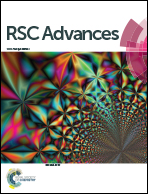Research on laser-assisted selective metallization of a 3D printed ceramic surface
Abstract
In recent years, the question of how to fabricate conductive patterns on complex ceramic surfaces in a high-definition and low-cost manner has been an increasing challenge. This paper presents a complete process chain for the selective metallization of Al2O3 ceramic surfaces based on 3D printing. Laser pre-activation (LPA) is used to “activate” the surface of the ceramic substrate, and then, combined with the electroless copper plating (ECP) process, the Al2O3 substrates can be metalized with preset patterns at room temperature, and a densely packed copper layer with high accuracy and good reproducibility can be obtained. The obtained coating has satisfactory roughness, excellent stability and bonding force, and good solderability. The resistivity of the copper layer measured using a four-probe resistance meter is about 3.1 mΩ cm. The limit line width of the metal circuit is about 33.2 μm. Finally, application cases of precision devices such as antennas with ceramic substrates are prepared. This study opens up a broader space for the design and manufacture of 3D microwave devices.



 Please wait while we load your content...
Please wait while we load your content...